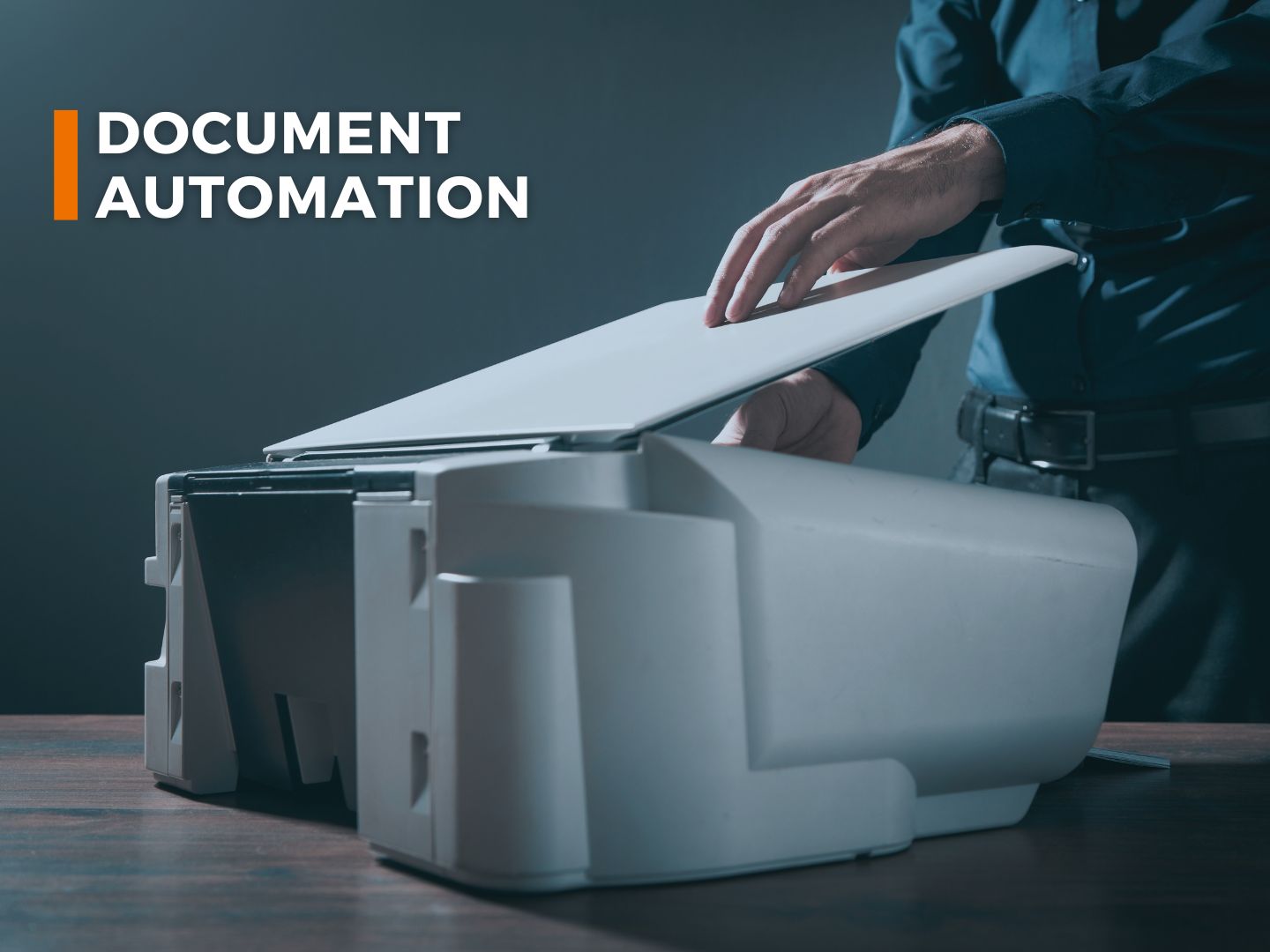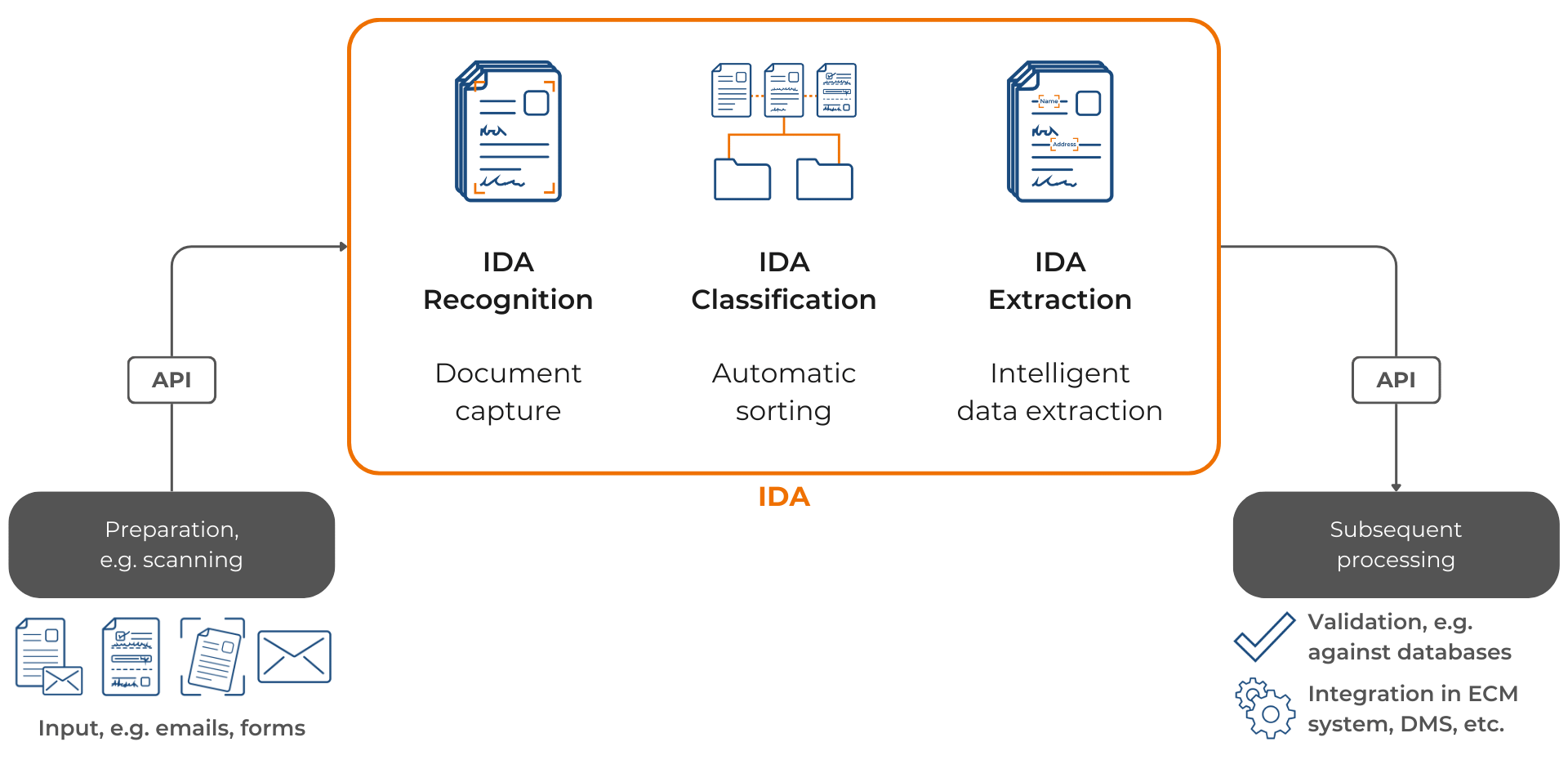Document Automation
The Future of Efficiency and Accuracy in Businesses and Public Administration

- 1
- 2
- 3
- 4
- 5
- 6
- 7
- 8
Automation, Artificial Intelligence (AI), and the shortage of skilled professionals are the buzzwords currently shaping the business world. At a time when companies are increasingly seeking ways to optimize their operations and compensate for the lack of qualified personnel, document automation is becoming a critical factor. But what exactly is behind this buzzword, and why is it so important?
What is Document Automation?
Document automation refers to the use of technology to automate manual and often repetitive tasks in the management and processing of documents. This involves various tools and algorithms capable of automatically capturing documents using OCR (Optical Character Recognition) and subsequently processing them without requiring human intervention. This includes the use of Artificial Intelligence (AI) and machine learning.
Why is Document Automation an Important Topic?
The necessity for automation arises from several current challenges. The shortage of skilled professionals forces companies to use their available staff more efficiently. At the same time, the volume of documents—whether in digital or physical form—is steadily increasing. The need to enhance efficiency in document management is therefore unavoidable. Companies that rely on manual processes risk not only time delays but also errors and inefficiencies that they can scarcely afford in an increasingly competitive market.
The Benefits of Document Automation
Time Savings: Automated systems can process more documents in a shorter time than humans.
Cost Reduction: By reducing human errors and increasing processing speed, operational costs can be lowered.
Error Minimization: Automated systems minimize the risk of human errors, leading to higher accuracy and reliability.
Compliance and Security: Automated processes can ensure that documents comply with legal requirements and are securely stored.
Scalability: Companies can scale their document management without needing proportionally more resources.
Intelligent Document Processing with IDA
IDA (Intelligent Document Analysis) is an advanced software suite for automating document processing. To use IDA, scanned documents must be available in digital format (PDF, PNG, JPG, etc.). The solution includes several modules: IDA Recognition captures both handwritten and machine-written text as well as historical scripts. The data is output in JSON format, which forms the basis for further processing. IDA Classification classifies documents based on machine learning. IDA Extraction intelligently extracts data from structured, semi-structured, and unstructured documents. The results can then be transferred to existing ECM or DMS systems, facilitating integration into existing business processes.
Use Cases of Document Automation
In today’s fast-paced business landscape, intelligent document processing is transforming how organizations manage and process their critical paperwork.
Records Management
Automated document systems streamline the storage, retrieval, and management of records, ensuring that important information is easily accessible and well-organized.
Customer Onboarding
Automation simplifies the onboarding process by quickly processing new customer information, reducing the time and effort required to integrate new clients.

Mailroom Automation
By automating mailroom operations, businesses can efficiently sort, categorize, and distribute incoming mail, improving overall efficiency.
Contract Management
Automated systems handle the creation, tracking, and management of contracts, ensuring compliance and reducing the risk of errors.
Various industries benefit significantly from document automation. In finance and insurance, it enhances data accuracy and regulatory compliance. The healthcare sector uses automation to manage patient records and administrative tasks more efficiently. Public sector entities improve service delivery and transparency, while scanning services can process higher volumes of documents faster and more accurately. As technology advances, these sectors will continue to see enhanced productivity and security through document automation.
The Future of Document Automation
The technology of document automation is rapidly evolving. Future trends might include the integration of blockchain for additional security, improved AI algorithms for even higher accuracy, and the increased use of cloud technologies. In an increasingly digitized world, the role of automation will continue to gain importance, supporting businesses in making their processes more efficient and secure.
Conclusion
Document automation offers a range of benefits for businesses, from time savings to cost reduction and error minimization. With solutions like IDA, companies can elevate their document processes to a new level and meet the challenges of skilled labor shortages and increasing document volumes. Those who adopt this forward-looking technology in time can secure a clear competitive advantage and be well-prepared for a digital future.
So, consider how you can implement automation in your organization to benefit from its numerous advantages.
Let’s Connect
Ready to transform your document processes and achieve new levels of efficiency and accuracy? Contact us today to discover how our advanced document automation solutions can empower your organization. Together, we can shape a more productive and profitable future.
Get in touch with us now!

